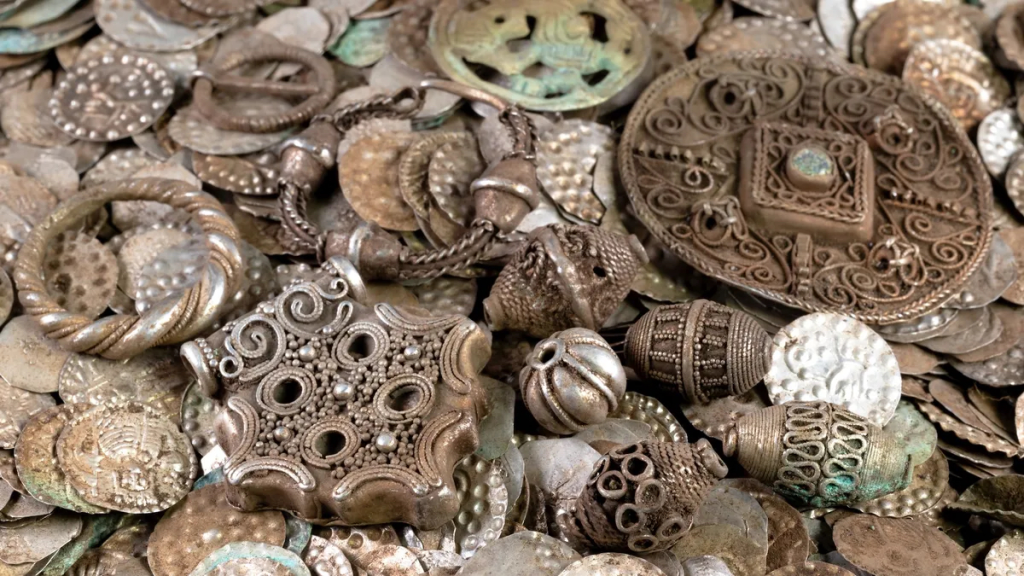A man digging for worms during a stay at his summer house near Stockholm unearthed something else instead: a cache of up to 20,000 silver coins from the Early Middle Ages, as well as pearls, pendants, and rings.
The haul weighed around 13 pounds and was turned over to archaeologists now analyzing the treasures, most of which are thought to date back to the 12th century. As cited in a report by Live Science, Sofia Andersson, an antiquarian at the County Administrative Board in Stockholm, said in a statement, “This is probably one of the largest silver treasures from the Early Middle Ages that has been found in Sweden.”
The artifacts, which were buried in a copper cauldron, include coins imprinted with “Kanutus,” a reference to Swedish king Knut Eriksson, who ruled from 1173 to about 1195. Some of them are so-called “bishop coins” minted by powerful bishops, as suggested by the presence of a shepherd’s staff design used by clergy at the time.
“It is completely unique; we have no other medieval treasures from Stockholm,” Lin Annerbäck, director of the Medieval Museum in Stockholm, told the Swedish newspaper Dagens Nyheter.
Stockholm didn’t yet exist at the time some of the coins derived from, having been founded in 1252 after what Archaeology Magazine described as “a turbulent end of the 12 century, when the Swedes were attempting to colonize areas of Finland.”
“We believe that many hid treasures like this to keep them in the family’s possession,” Annerbäck told Dagens Nyheter. “The fact that the silver is mixed with pearls and other things makes it seem like it’s someone’s wealth that has been hidden away.”
